Simran Sethi on creating ‘the first podcast to cover the continuum of chocolate’.
As Published in Eartha on 6 June 2017
“The fruits are ridged, oblong or round, roughly the size of large cantaloupes or American footballs. Spanning a range of colors, they can be both smooth and mottled, and are attached to tree trunks and thick branches by surprisingly thin stems less than one-fourth of an inch thick. The pods grow vertically out of wide branches and trunks of trees, and their placement look haphazard, like a botanical game of Pin the Tail on the Donkey.”
The above paragraph is from the book Bread, Wine, Chocolate: The Slow Loss of Foods We Love, and it describes the cacao tree which gives one of our favourite foods – chocolate.
When it comes to chocolate the words we often see strung along are ‘delicious’ or ‘divine’. After all, chocolate is the ‘food of the Gods’. But, ‘mottled fruits’ or ‘American footballs’ are not really descriptors we would expect in this context. Award-winning journalist and author of Bread, Wine, Chocolate: The Slow Loss of Foods We Love, Simran Sethi in her podcast The Slow Melt shows us some of the lesser known facets of the chocolate world. Through a series of interviews, Simran explores the scenes behind the bars and the stories of the many hands that make chocolate possible for us.
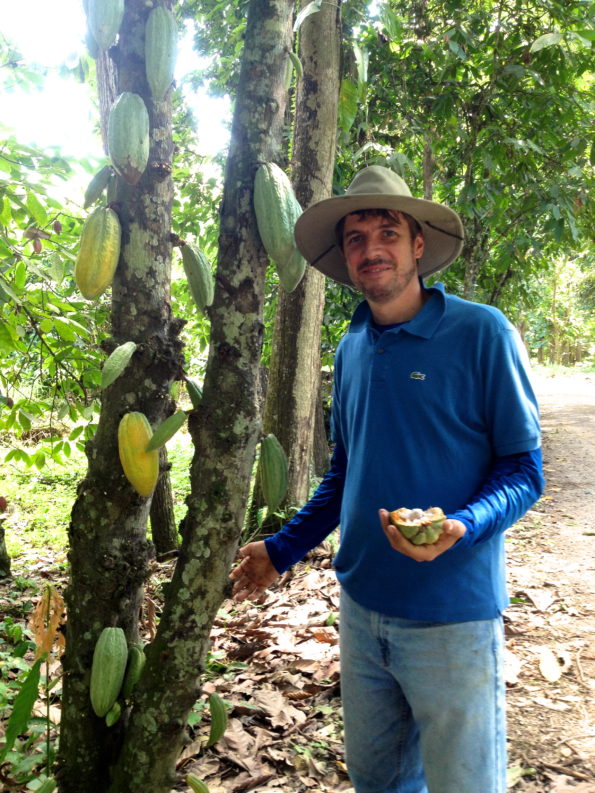
Designated one of the eight women saving the planet by Marie Claire, Simran Sethi’s work focuses on food sustainability. Her book delves into the loss of agro-biodiversity and was voted one of the Best Books about Food of 2016 by Smithsonian Mag. She is also listed as one of the 20 Food Leaders under 40 by Food Tankand lauded as the environmental ‘messenger’ by Vanity Fair. Over Skype Simran talked about creating ‘the first podcast to cover the continuum of chocolate’.
A podcast about chocolate immediately warrants opening up recipe books and getting ready to show our prowess with the double boiling method. But that’s not what The Slow Melt is about.
“In Bread, Wine, Chocolate; The Slow Loss of Foods We Love, I explore changes in food and agriculture, specifically biodiversity through bread, wine, coffee, chocolate and beer. Through that research which took me to six continents over five years, I really fell in love with chocolate for three reasons. The first reason being chocolate is something that I have loved since my childhood. I have this prolonged relationship with this food. Secondly, I realised how little I knew about it. I thought chocolate came from Belgium or Switzerland. I could not recognise it as I describe it in the book – in nature. There is so much to be learned about this substance,” says Simran.
She goes on to explain that the main reason why she felt the need to create this podcast was to tell the stories that aren’t being told. “The only story we typically hear is that there is a poor farmer or there is an interesting hipster craft chocolate maker, or there is a recipe. To me, those are incomplete. The stories of their lives are rich and deep. It is a disservice to them when we don’t hear the whole story.”
As a journalist, my goal is to highlight farmers and empower consumers. Simran Sethi Click To TweetGuests on the podcast include academicians, chocolate makers, industry personnel, farmers, writers and a motley of others who make us look at chocolate in a different light. 27 people, five continents and nine episodes in Season 1. Chocolate never got so interesting! “It is a podcast about chocolate, but it’s also a podcast about biodiversity, about climate change, about economics, about science, about geography, and about deliciousness. That’s the motivation behind it- to use one food as a way to tell the stories of the world. As a journalist, my goal is to highlight farmers and empower consumers,” she shares.
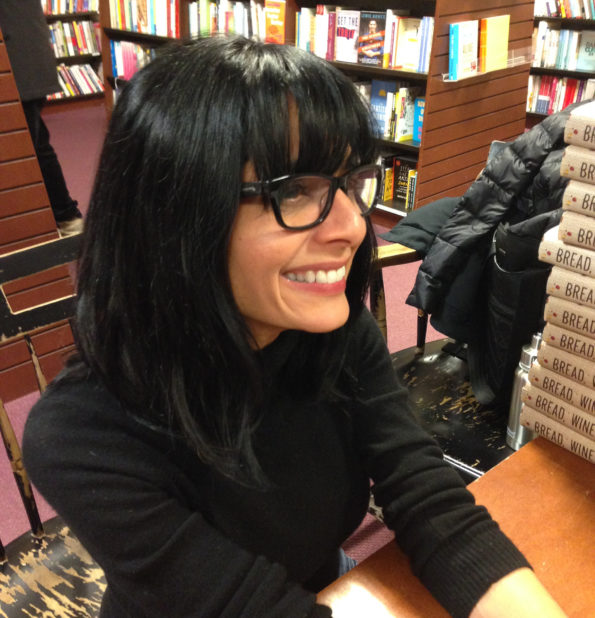
For all the love we shower on our chocolate bars, it is very surprising to know how little of chocolate we are actually tasting. Chocolate like every food has inherent characteristics depending on where it comes from. Speakers on The Slow Melt emphasise the importance of trying out different chocolates and building our flavour profiles. Not that we ever need encouragement when it comes to eating our favourite dessert, but Simran explains why this aspect plays a bigger role than we can envisage.
“We certainly have our favourites for every food. But when it comes to chocolate, many of us have only had the mass-produced versions. To discover terroir in chocolate requires exploration. If you go from eating a commercial chocolate bar with lots and lots of sugar to one of these more specialised bars with less sugar in them, you are actually missing the sugar at the beginning. It takes time to adjust your palate. We have become familiar with this adjustment for other foods, but with chocolate, it is still quite new. The mass produced bars typically have about 10% cocoa content.To tune one’s nose and mouth to the cocoa – the actual chocolate takes a lot of time.”
The cocoa percentage in our bars does more than just heighten our chocolate experience. “To support cocoa farmers, look for chocolate that contains more cocoa,” Simran writes in her recent Op-Ed. “Despite the success of the chocolate (and confection) industries, 90 percent of cocoa farmers operate at the margins. A recent study by the French Development Agency and Barry Callebaut (the world’s largest cocoa manufacturer) determined farmers in Ivory Coast earn roughly 91 cents a day. Imagine what it means for those farmers when the price they receive for the fruits of their labor drops — as it has recently — by 33 percent,” she elaborates in the same article.
Not only are we disengaged from chocolate as a product, but we are also disconnected from the source. As we get over this Willy Wonka Effect, we start to realise that the magic begins at the source, but gets lost in translation somewhere in the middle. “Most commercially available chocolate contains a blend of bulk, or commodity, cocoa from any number of unnamed places. Chocolate labeled ‘single-origin’ contains cocoa sourced from only one country or region. And every producing country — from Colombia to Papua New Guinea – has something unique to offer,” Simran writes.
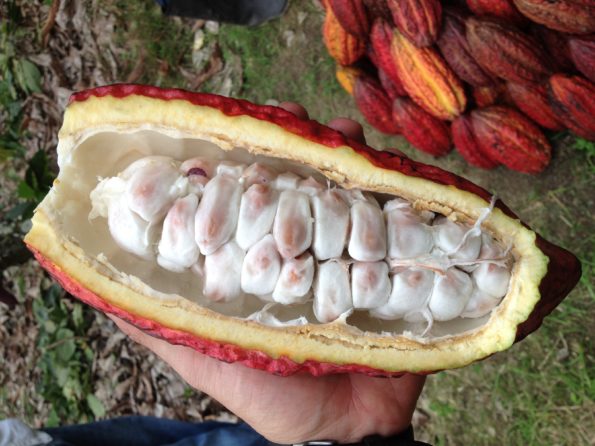
When it comes to beer, wine or even coffee for that matter, consumers are now looking for something different and unique in their mugs, glasses and cups. With chocolate, a lot of us still want that familiar taste bar after bar. We find many of the speciality or artisan chocolates overpriced because we are not sure if the product we have in hand after paying the amount is what we should be getting. Until we explore chocolate, we will never be sure.
In India, artisan chocolate makers like Earth Loaf and Mason & Co are working on ensuring that the Indian cacao gets the centre stage in their products. They also work closely with cacao farmers, thereby, helping them improve their crops and providing them with better returns for their labor. Not only do they encourage farmers to grow varietals of cacao (thereby adding to the biodiversity of the crop) and give consumers interesting new flavours, they also help support sustainable farming practices. For instance, Mason & Co works with a family run cacao farm wherein all the plant waste in the farm is recycled. “Craft chocolate costs more than what’s mass-produced because its makers are committed to raising the profile of quality cocoa, and they pay a premium for the crop,” Simran writes.
The chocolate market in India, she adds, has a lot of potential which chocolate makers recognise. With increased interest and as a result of globalisation, we should soon be able to not only differentiate Indian cacao, but also travel vicariously through chocolate from all over the world.
Does this mean the onus of reform falls on one sector? “There are two trajectories here. There is scale, and there is specialisation. It is not clear if either one of these is yet delivering high values to farmers. We don’t have exact numbers on this, but let us assume that less than 10 percent – I would even say probably less than 5 percent comprises of speciality or the craft chocolate market. The majority 90 plus percent comes from the mass produced big chocolate market. That is where a lot of the reform has to happen because quite simply that is where our chocolate comes from. That is why in the podcast I talk about both. We have speakers from bigger chocolate manufacturers and speciality or craft chocolate makers.”
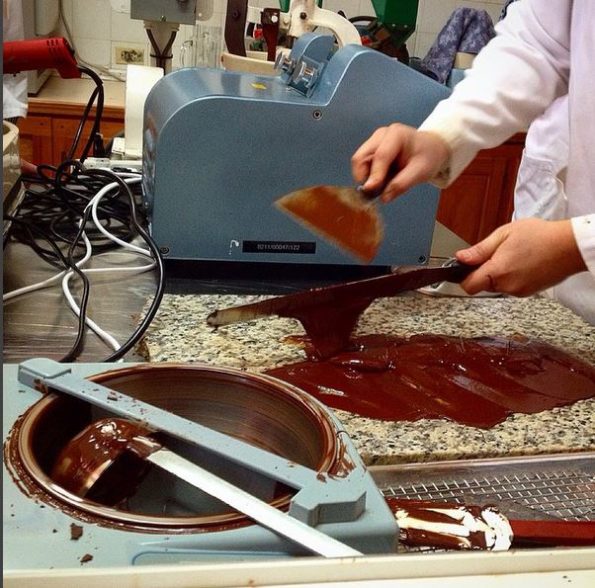
With all this information available to us, there is only one question that we need to ask. What can we do as consumers to make chocolate magical for producers, consumers and everyone in between- “Look for the story on the bar. See if the makers talk about an origin. Look for the story on the website. Understand the maker, where are they placed, what are their commitments to sustainability, environmentalism and social justice. What certifications do they support. If they are sharing something on their website or the wrapper, they are inviting us the consumers to hold them accountable. This isn’t limited to smaller manufacturers. There are some claims from big manufacturers that are also very important.”
Had I not read her book, I might have asked Simran that all this seems like an awful lot of effort, even for a food we love. But she already answered that question in “Bread, Wine, Chocolate” through the following lines.”In each of my journeys there was a moment when a single glass of wine or slice of bread changed me. But chocolate was, and is, different. There is no one bar of chocolate that improved my life; they all have.”
For more information, visit The Slow Melt and get your dose of deliciousness on chocolate.
Similar posts which may interest you.
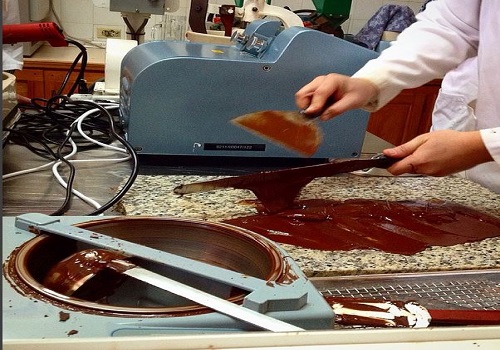
I think you must publish this article in all the food magazines in india and abroad. This is a wonderful article! Great job shammi!
Thank you so much 🙂